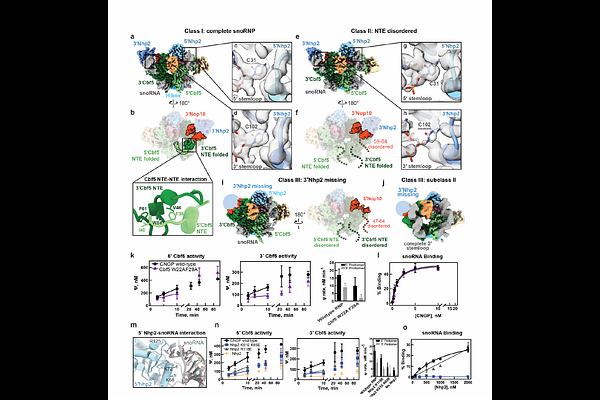Interprotomer Communication and Functional Asymmetry in H/ACA snoRNPs

Interprotomer Communication and Functional Asymmetry in H/ACA snoRNPs
Singh Panwar, H.; Vos, T. J.; Xie, X.; Jang, H. S.; Lee, H.; Sheldon, R.; Worden, E. J.; Kothe, U.
AbstractH/ACA small nucleolar ribonucleoproteins (H/ACA snoRNPs) facilitate essential cellular processes such as RNA modification, folding, and stability. Here, we present multiple cryo-EM structures of endogenous, catalytically active insect H/ACA snoRNPs containing two protomers assembled on a two-hairpin H/ACA snoRNA. By characterizing key protein-protein and protein-RNA interactions, we reveal the coordination of pseudouridylation activity across the two protomers which explains the predominance of two-hairpin structures in eukaryotic H/ACA snoRNAs. Moreover, we discovered that several mutations in H/ACA proteins associated with Dyskeratosis congenita directly impair pseudouridine formation suggesting how these mutations disrupt RNA modification and ribosome biogenesis in this disease. Additionally, we uncover coordinated structural changes between Nop10, Nhp2 and the N-terminal extensions of Cbf5 in the 3\' protomer that resemble active and inactive conformations and may regulate H/ACA snoRNP activity. In summary, this study provides detailed insight into the structure and function of RNA modification-competent, asymmetric H/ACA snoRNPs, which play pivotal roles in cellular processes including ribosome biogenesis, rRNA folding, (m)RNA modification, and telomere maintenance.